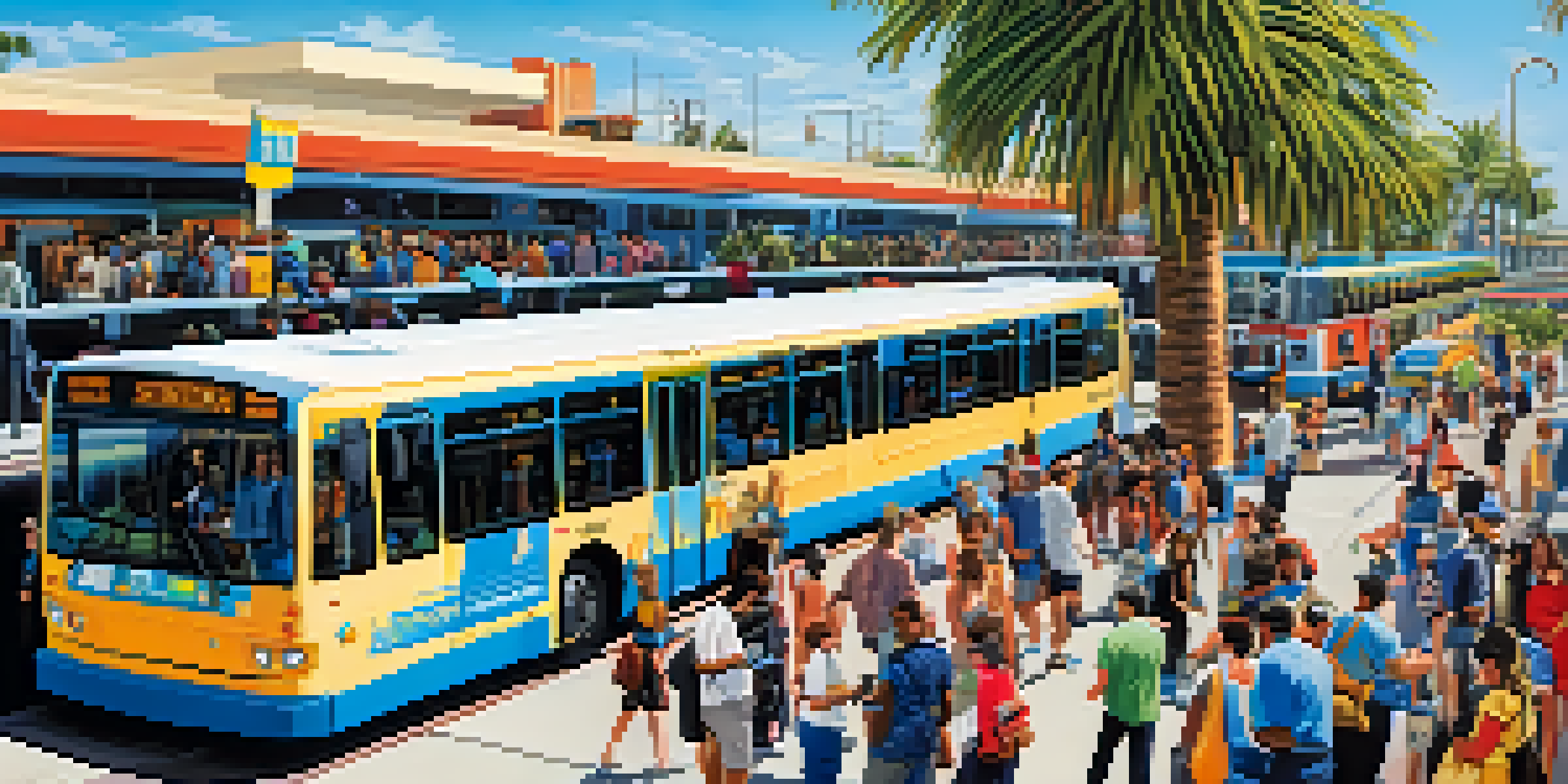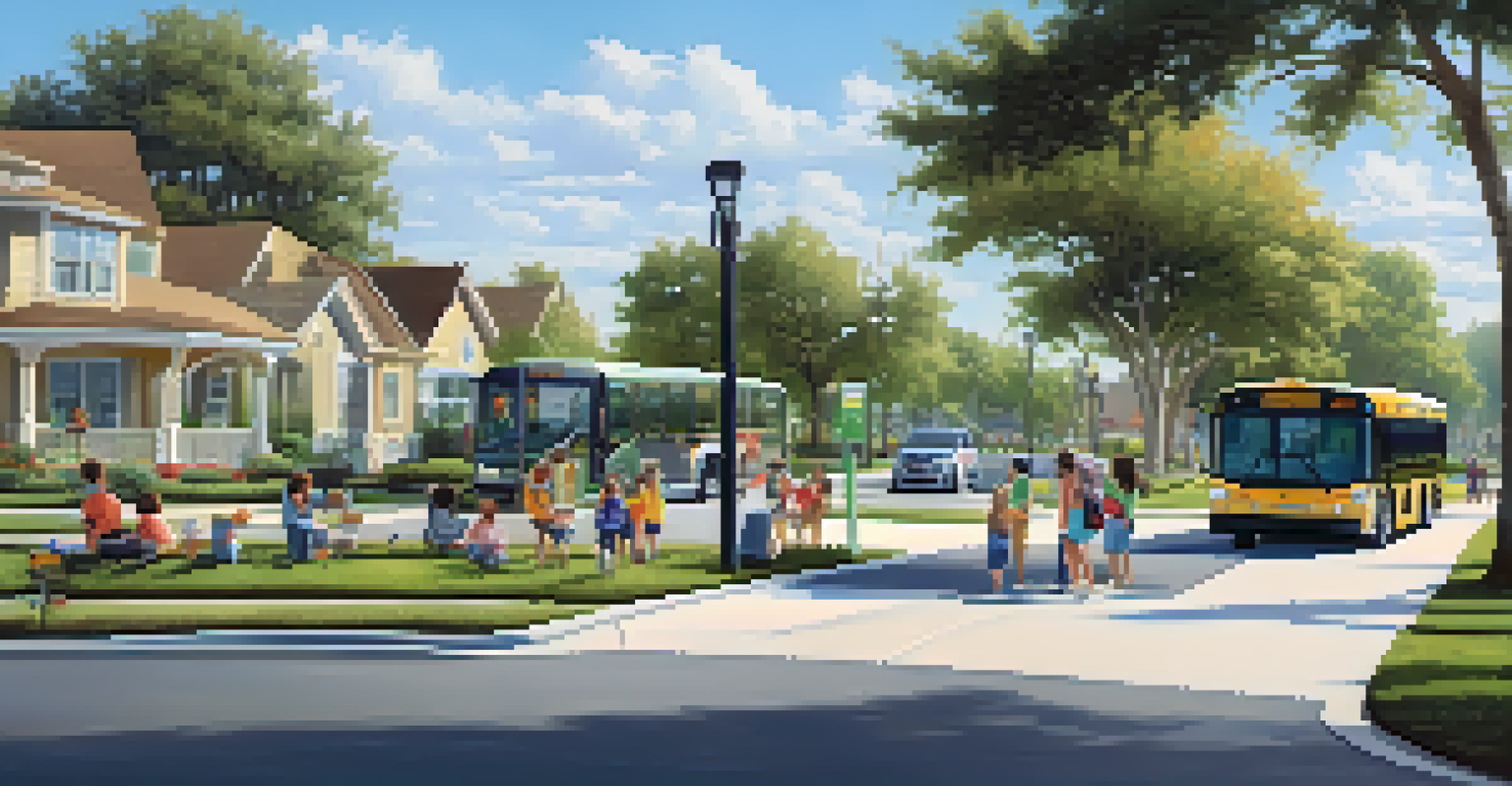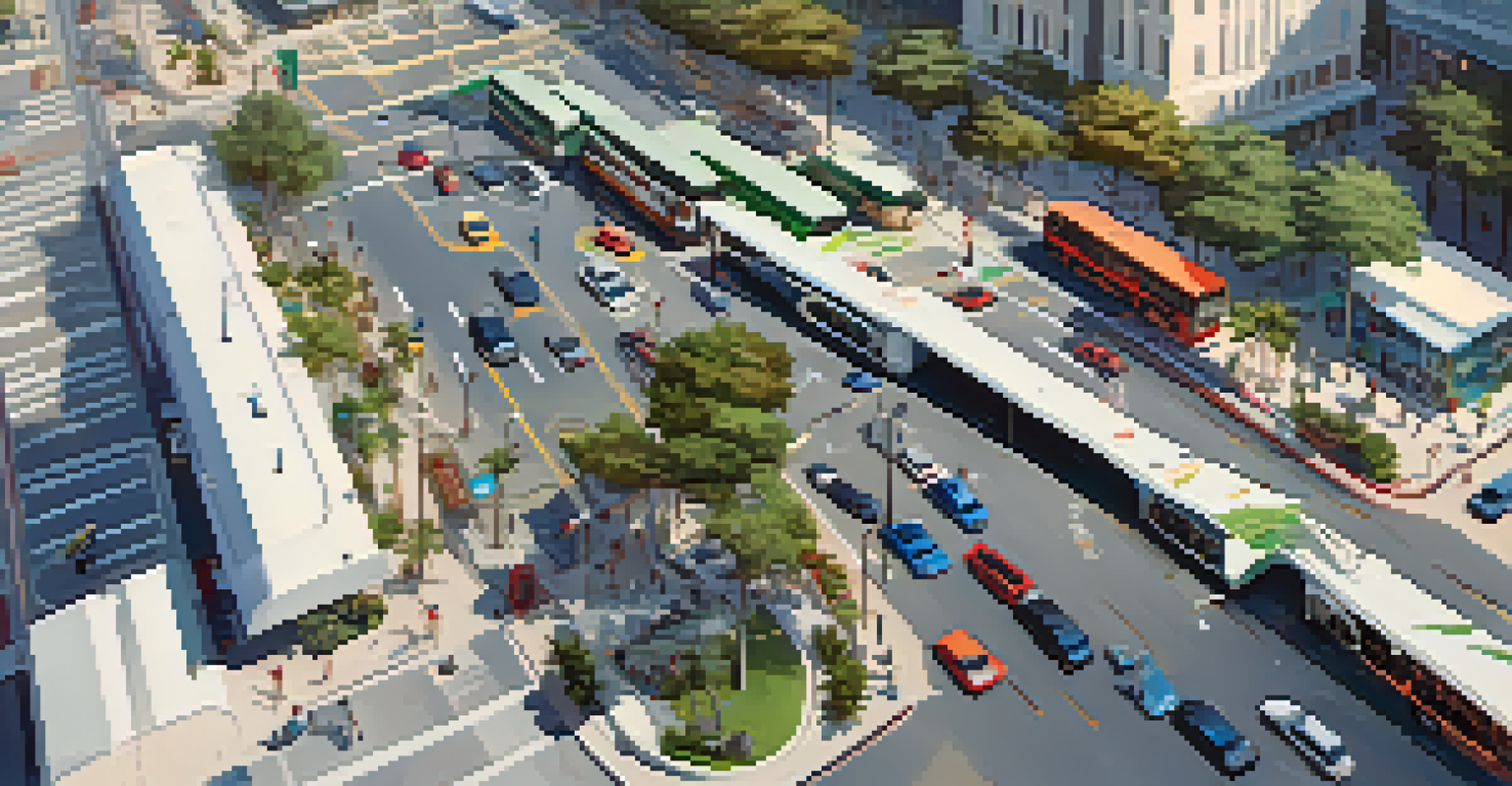Challenges Facing Florida's Public Transportation System

Rapid Population Growth Strains Public Transit Resources
Florida's population has been on a steady rise, leading to increased demand for public transportation. More residents mean more commuters, and the existing infrastructure often struggles to keep pace. For example, cities like Orlando and Miami see traffic congestion that can deter people from using public transit options.
Public transportation is not just a mode of transit; it's a lifeline for communities, connecting people to opportunities and each other.
As new neighborhoods spring up, the need for effective transit links grows. However, many areas remain underserved, leaving residents with limited options. This imbalance can lead to frustration and a reliance on personal vehicles, which exacerbates traffic problems.
Without strategic planning and investment, public transportation may become overwhelmed. The challenge is to develop solutions that not only meet current demands but are also sustainable for future growth.
Funding Shortfalls Impact Service Quality
One of the most significant challenges facing Florida's public transportation system is a lack of consistent funding. Budget constraints often lead to cutbacks in service frequency and maintenance, making public transit less appealing to users. Imagine waiting longer for a bus that may or may not arrive on time; this is a reality for many Floridians.

State and local governments struggle to allocate sufficient funds while addressing various competing priorities. Many transit agencies rely heavily on federal grants, which can fluctuate year to year, leading to unpredictable budgeting. This uncertainty makes long-term planning for improvements nearly impossible.
Population Growth Strains Transit
Florida's rising population increases demand for public transit, often overwhelming existing infrastructure.
Inadequate funding also affects the ability to implement new technologies or expand services. To create a robust public transit system, a more stable and reliable funding model is essential.
Outdated Infrastructure Hinders Efficiency
Much of Florida's public transportation infrastructure is aging and in need of significant upgrades. Buses and trains can become less reliable if they aren't maintained or replaced regularly, causing delays and disruptions. Take, for instance, the aging buses in many cities that simply can't keep up with demand.
Sustainability is about more than just reducing emissions; it's about making sure our cities are livable and accessible for everyone.
This outdated infrastructure not only affects service quality but also discourages new riders. If potential users perceive public transit as unreliable, they may choose to drive instead. This creates a vicious cycle where declining ridership further reduces funding and service quality.
Investing in modernizing infrastructure is crucial for enhancing efficiency and attracting more riders. New technologies, such as real-time tracking apps, can provide updates that improve the overall user experience.
Geographical Challenges Limit Accessibility
Florida’s diverse geography poses unique challenges for public transportation. With sprawling urban areas, suburban neighborhoods, and rural landscapes, creating a cohesive transit system becomes complex. For example, a bus route that works well in a densely populated area might be impractical in rural settings.
Additionally, the lack of connectivity between different transit systems can leave riders stranded. A commuter might find it easy to reach a train station but struggle to get to their final destination without a reliable bus service. This complexity can deter people from considering public transportation as a viable option.
Funding Shortfalls Hurt Service Quality
Inconsistent funding leads to reduced service frequency and maintenance, making public transportation less appealing.
Addressing geographical challenges requires innovative solutions, including partnerships between different transit agencies. Improved coordination can help create a more seamless experience for riders across the state.
Public Perception and Trust Issues
Public transportation often faces an uphill battle regarding perception. Many people associate it with inconvenience, delays, and a lack of safety. This stigma can deter potential riders, especially those who have the option to drive.
Building trust in the system is essential for increasing ridership. For instance, campaigns that highlight improvements or safety measures can help change negative perceptions. Additionally, ensuring clean, safe, and reliable service is crucial for fostering a positive image.
Engaging the community in discussions about public transportation needs can also help. By addressing concerns directly, transit authorities can build a sense of ownership and trust among users.
Environmental Concerns and Sustainability Initiatives
As climate change becomes an increasingly pressing issue, sustainable public transportation options are more critical than ever. Florida's public transit system has the potential to reduce carbon emissions by encouraging people to choose buses and trains over personal vehicles. However, many systems still rely on older, less efficient vehicles.
Implementing eco-friendly technologies, such as electric buses, can help transit agencies meet environmental goals. These initiatives not only reduce emissions but also attract environmentally conscious riders. For instance, cities like Gainesville are already exploring electric bus options to enhance sustainability.
Collaboration is Key for Improvement
Effective solutions for Florida's public transportation challenges require collaboration among local, state, and federal agencies.
Balancing environmental concerns with budget constraints is a challenge. However, embracing sustainable practices presents an opportunity for public transport to play a pivotal role in combating climate change.
Technological Advancements and Integration Challenges
Technology can be a game-changer for public transportation, offering tools for better service and user experience. From mobile apps that track bus arrivals to automated fare collection systems, innovation can streamline operations. However, many agencies struggle to keep up with the rapid pace of technological change.
Integrating new technologies into existing systems can be a daunting task. Legacy systems may not easily accommodate modern solutions, leading to compatibility issues. This can hinder the potential benefits of technology, leaving transit agencies stuck in a cycle of outdated practices.

Investing in technology not only enhances user experience but also improves operational efficiency. To fully harness these advancements, transit agencies need a clear strategy for adoption and integration.
Collaboration Between Agencies Can Drive Change
Addressing the challenges facing Florida's public transportation system will require collaboration among various stakeholders. Local, state, and federal agencies must work together to create a unified vision for transit. This kind of teamwork can lead to innovative solutions that benefit all Floridians.
Partnerships with private companies and community organizations can also play a crucial role. For instance, ride-sharing services can complement public transit by offering first-mile and last-mile solutions, making it easier for riders to reach their destinations.
Ultimately, a collaborative approach can lead to more efficient use of resources and a stronger public transportation system. By coming together, Florida can create a transit network that meets the needs of its diverse population.